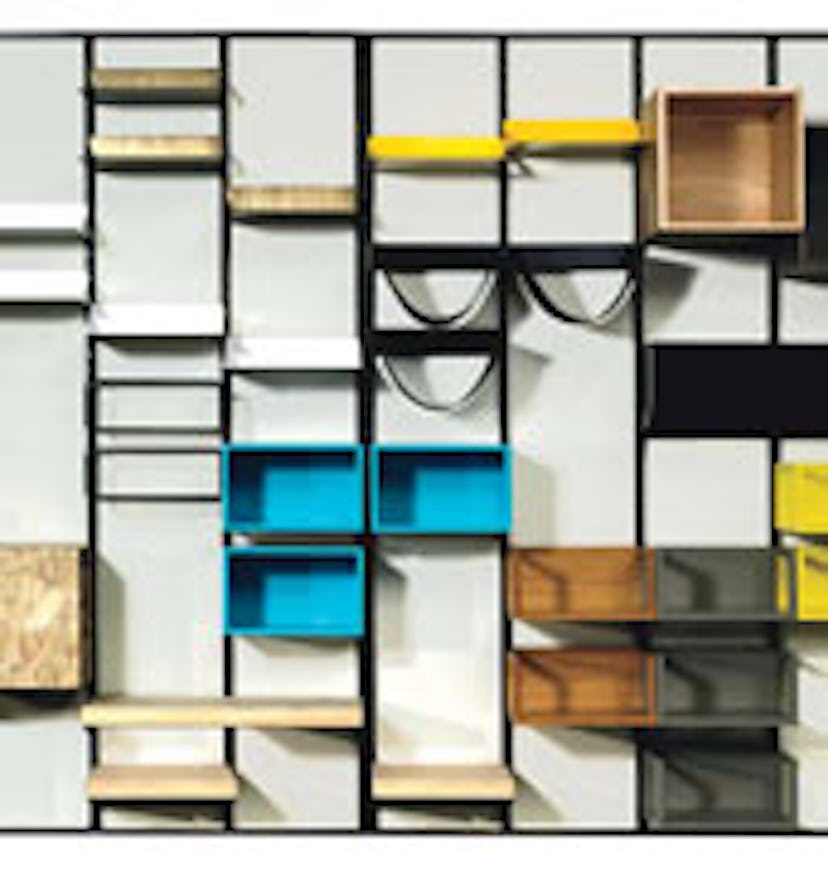Oh, Canada!

It used to be that Canada’s main style exports were Roots sweatshirts and mukluks. But the country has been cultivating a first-class stable of talented young designers, and their work has quietly migrated south to such high-end furniture stores as the Future Perfect and Matter. Judging by these six design companies, there’s a lot to be said for neighborly love.
1
Initially, siblings Thien and My Ta Trung designed their streamlined collections around a single material, like felt or metal, but now the Montreal-based duo has gone in the opposite direction. Clients can customize Domison’s newest line, for instance, mixing and matching shelves for a storage unit (left). “All the pieces can be transformed,” says Thien. “The world is changing constantly, and furniture can’t just stay the same.” domison.com
2
Despite being a cabin-owning, fly-fishing outdoorsman, Brian Richer and his business partner, Kei Ng, started out with ironic objects that poked fun at backwoods Canadian clichés: headphones sprouting giant antlers and a limestone stool resembling a beaver-gnawed log. “I was amazed when people actually wanted to buy them,” Richer admits. But with a newly opened restaurant in Toronto and a production deal with local furnituremaker Klaus by Nienkämper, the designers are taking their venture very seriously indeed. castordesign.ca
3
In 2007, when Montreal collective Samare began collaborating with rawhide weavers, Canadians didn’t get it. “Our furniture reminded them of their grandparents’ house,” says Nicolas Bellavance-Lecompte, one of four designers in the group. But then Wallpaper came calling, and now the group is hailed as a savior of local traditions. Their latest collection blends rawhide with brass, sheepskin, and beaver fur—a look that Bellavance-Lecompte likens to “a Gucci store in Planet of the Apes.” samarestudio.com
4
They could easily be mistaken for the work of Ettore Sottsass, but Tahir Mahmood’s mortar and pestles are made in Lahore, Pakistan, by local craftsmen using hand-cranked lathes. “You can combine old techniques with modern technology to create something totally new,” says Mahmood, who shuttles between Pakistan and Toronto, where he has lived since 2007. The designer’s multiculti approach goes beyond his homeland: His totemlike porcelain Girgit lamps are made by an Indonesian artisan in Canada, and he’s looking into tile glazing in Istanbul. tahirmahmood.com
5
Suspended from the ceiling in artful clusters, Bocci’s glass pendant lamps look like raindrops, galaxies, or barnacles—something made by nature rather than machines. Creative director Omer Arbel, who set up his design studio in Vancouver five years ago, oversees an experimental glass and porcelain workshop devoted to furnishings that put form before function. “We reject the rational and focus on emotion,” says Arbel. “It’s not a very contemporary way to approach design, but we think it’s important.” bocci.ca
6
Identical twin woodworkers Jason and Lars Dressler are skilled in the art of reinvention. In their hands salvaged shoe lasts become Duchampian lamps and benches, and beat-up chairs from an Ontario factory are revamped with wood splints and brightly colored paint. “Our work is dictated by the materials that are available,” Jason says, pointing out that in Canada, where industry is on a steep decline, there’s no shortage of unwanted objects. brothersdressler.com